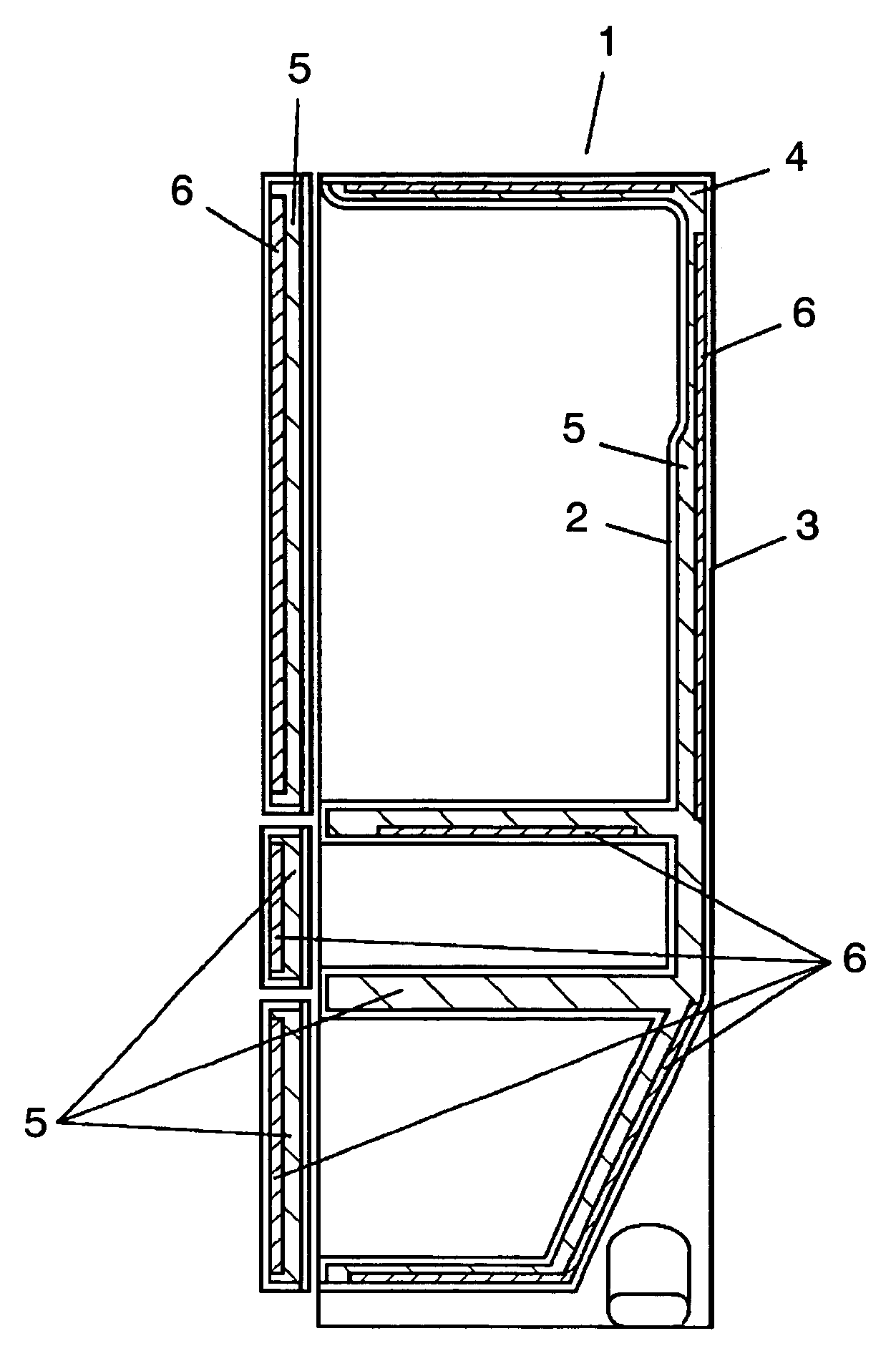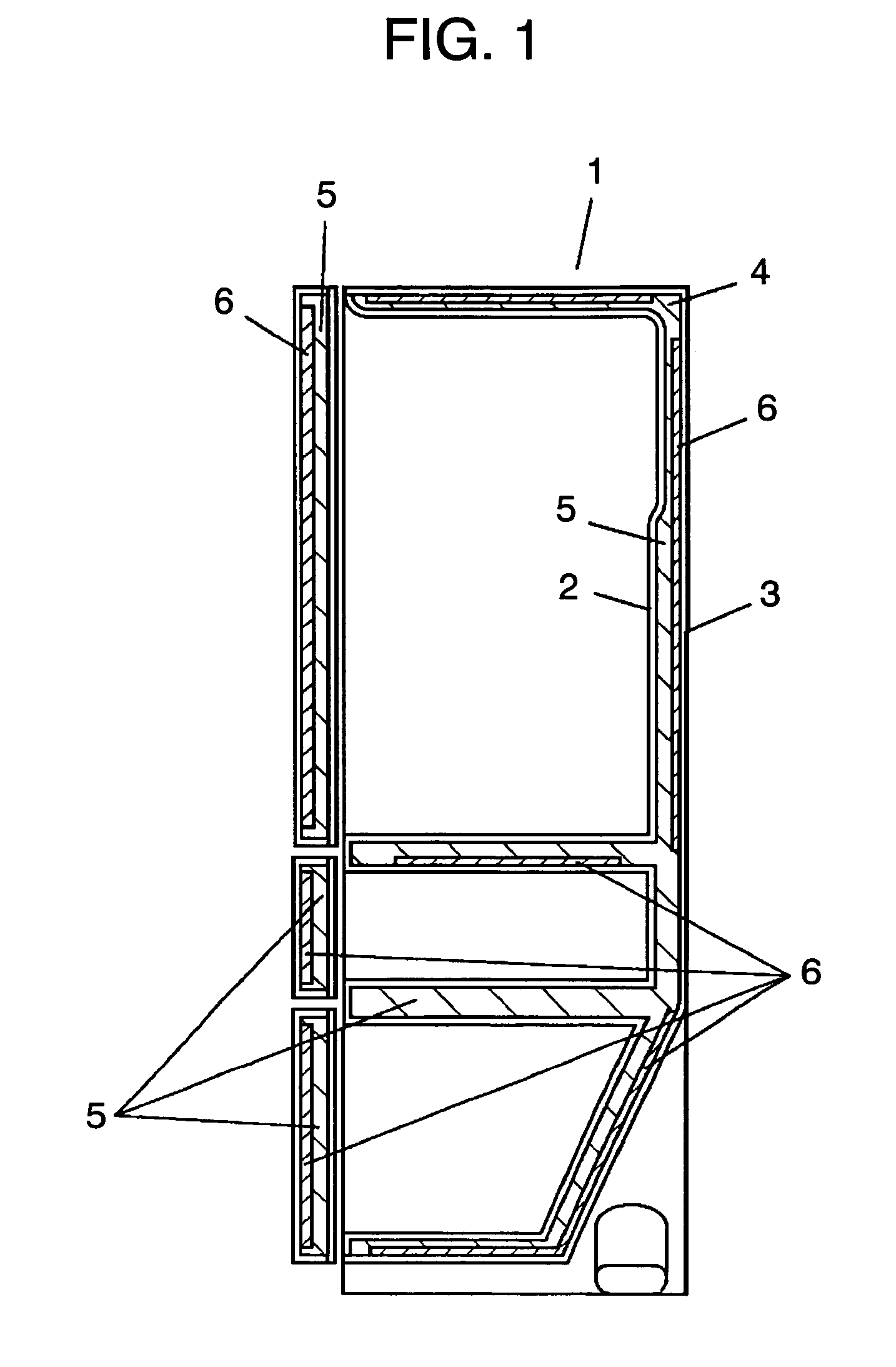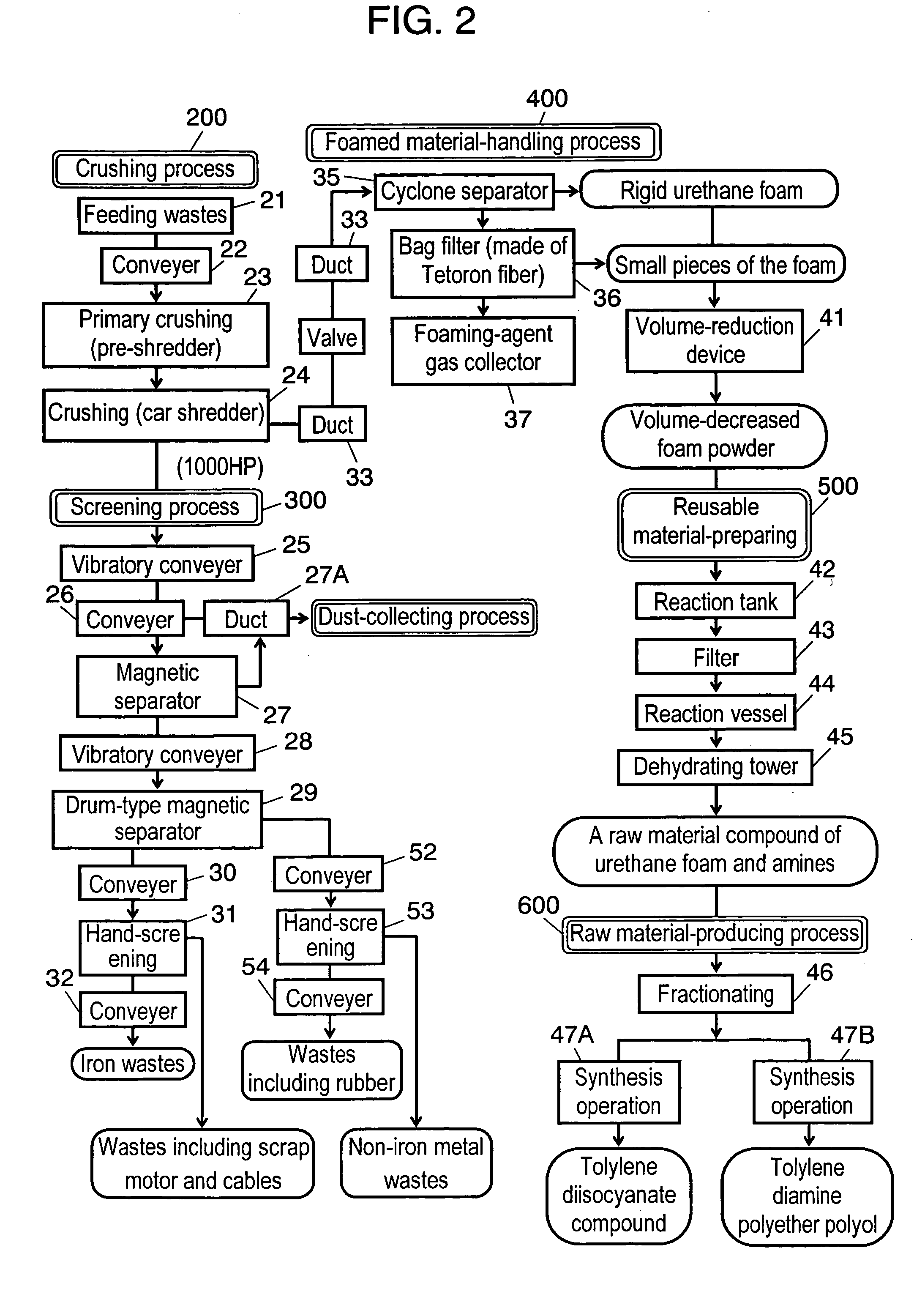Insulated box body, refrigerator having the box body, and method of recycling materials for insulated box body
a box body and refrigerator technology, applied in the field refrigerators having box bodies, and recycling methods of insulated box bodies, can solve the problems of inability to melt plastics, especially rigid urethane foam made of thermosetting resin, to achieve the effect of enhancing recycling efficiency, offering structural strength, and high insulation efficiency
- Summary
- Abstract
- Description
- Claims
- Application Information
AI Technical Summary
Benefits of technology
Problems solved by technology
Method used
Image
Examples
first exemplary embodiment
[0060]FIG. 1 shows an insulation box unit of the first embodiment. Insulation box unit 1 includes synthetic resin-made inner box 2 and metallic outer box 3. In space 4 formed between inner box 2 and outer box 3, rigid urethane foam 5 and vacuum insulation material 6 are arranged in a multi-layered structure. In the manufacturing process of insulation box unit 1, vacuum insulation material 6 is bonded to outer box 3 in advance, and then the raw material of rigid urethane foam 5 is injected into space 4 to have an integral expansion. In the structure above, the coverage of insulation material 6 with respect to the surface area of outer box 2 was compared in the cases of 50% and 80%.
[0061]Rigid urethane foam 5 is produced by mechanical-mixing a premix component with an isocyanate component that is made of tolylene di-isocyanate composition. The premix is prepared by mixing, by weight, 3 parts of catalyst, 3 parts of foam stabilizer, 2 parts of water as a foaming agent, 0.5 parts of for...
second exemplary embodiment
[0066]FIG. 2 illustrates the procedures of a recycling method of the second embodiment.
[0067]First, the outline of the waste-disposal process is described.
[0068]Insulation box unit 1 to be recycled undergoes crushing process 200 and then screening process 300. In process 300, the materials broken down in process 200 are classified by weight and reclaimed according to predetermined material groups. In foamed material-handling process 400 processing light (in weight) wastes, rigid urethane foam 5 and blowing gas of a refrigerator are recovered. Urethane foam 5 fed from process 400 is brought into reusable material-preparing process 500 to obtain the material compounds of rigid urethane foam and amine groups as decomposition products.
[0069]Now will be described the details of the process with reference to FIG. 2.
[0070]In step 21 of FIG. 2, the wastes of insulation box unit 1 brought into the waste disposal facility are fed into crushing process 200. When a refrigerator is recycled, ref...
third exemplary embodiment
[0086]An insulation box unit of the third embodiment is described with reference to FIG. 1.
[0087]Rigid urethane foam is produced by mechanical-mixing a premix component, which has the tolylene diamine obtained in the second embodiment as a parent material, with an isocyanate component formed of the tolylene di-isocyanate composition also obtained in the second embodiment. The premix above is prepared by mixing, by weight, 3 parts of catalyst, 3 parts of foam stabilizer, 2 parts of water as a foaming agent, 0.5 parts of formic acid as a chemical reaction regulator to 100 parts by weight of tolylene diamine series polyether polyol with hydroxyl value of 380 mg KOH / g.
[0088]After that, an insulation box unit is to be produced as is described in the first embodiment. That is, the insulation box unit is formed of inner box 2, and outer box 3 to which vacuum insulation material is bonded in advance. After that, rigid urethane foam 5 is injected in space 4 between inner box 2 and outer box ...
PUM
 Login to View More
Login to View More Abstract
Description
Claims
Application Information
 Login to View More
Login to View More - R&D
- Intellectual Property
- Life Sciences
- Materials
- Tech Scout
- Unparalleled Data Quality
- Higher Quality Content
- 60% Fewer Hallucinations
Browse by: Latest US Patents, China's latest patents, Technical Efficacy Thesaurus, Application Domain, Technology Topic, Popular Technical Reports.
© 2025 PatSnap. All rights reserved.Legal|Privacy policy|Modern Slavery Act Transparency Statement|Sitemap|About US| Contact US: help@patsnap.com



